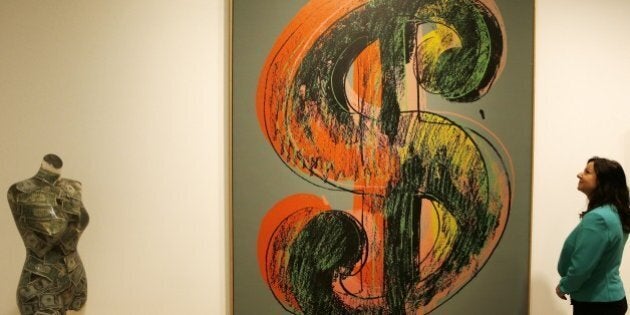
Coming as I do from a state that periodically suffers the boom and bust cycle inherent in the resources sector, I am only too aware of the impact that philanthropy and corporate sponsorship can have on the arts sector in Australia.
It can be a great blessing during times of plenty, and its withdrawal can be a real curse during downturns such as today.
For example, one arts organisation with which I'm involved has lost over $200,000 in sponsorship from two resource 'giants' in response to either the GFC in their home country or to the mining downturn here. As with any other enterprise, amounts far smaller than this can make the difference between an artistic success and an abject failure.
How did we come to be so reliant on corporate sponsorship and private philanthropy, that its withdrawal can have such an impact on an arts organisation, large or small?
Back in the 1990s, the swelling ranks of Australians who had lived and worked in the United States came back and held politicians in thrall with stories of how corporate sponsorship and philanthropy keeps the arts, education, medical research -- you name it -- going in the USA, with government playing an almost subsidiary role.
On the other hand, Australia, like Great Britain, had a somewhat reverse situation where governments were the major funders for the arts.
Prompted by this discussion, the Australia Council, the Federal Government's arts funding body, commissioned some research into philanthropy in Australia. The research, undertaken by an expat American, confirmed the impressions of the importance of corporate sponsorship and private philanthropy in the United States, but also underlined the importance of the taxation regime in place there.
Unfortunately, governments in Australia seem to have grabbed the first element without bothering with the second. Equally importantly, they did so without really having a dialogue with both the arts and business sectors as to the feasibility, viability, and sustainability of having a sector increasingly funded by anyone other than government.
In most states, and federally, there has been static or declining funding allocated for the arts, including to the state-funded galleries and museums that are the pride and joy of many of our state capitals. For example, in Western Australia, public funding fell from 1.2 percent of overall government expenditure in 2001 to 0.7 percent in 2014-15.
"Cut expenditure accordingly", some will say (like the person who wrote to The West Australian in the 1940s regarding the West Australian Symphony Orchestra to say that, if they knew what they were doing, they wouldn't need a conductor).
However, it's not that easy. Taking the orchestra example, the number of musicians or choristers can't be cut without seriously undermining its very existence -- an orchestra of less than 60 or 70 players really can't make Tchaikovsky's music sound convincing (no more Swan Lake or Nutcracker Suite), and can't even attempt to play Mahler with any credibility.
From the largest orchestra to the smallest artistic start-up, declining or static government funding can cause serious problems for an arts company. Hence the push to increase corporate sponsorship and private philanthropy on the part of boards of arts companies, and an equal push in future planning documents by governments.
However, the arts and cultural sectors are being forced to build these new, volatile revenue streams in very difficult economic conditions, and without a safety net due to declining funding. This issue was never really canvassed in a coherent way. No government ever said: "Now, over the next 10 years, we're going to reduce your funding by X percent and we expect you to generate a replacement funding stream yourselves".
Nor, crucially, did they say to corporate Australia: "We expect you to play an increasing role in sustaining the arts and cultural sectors in Australia, and let's discuss the best tax plan to encourage this". Instead, it's been trial and error, for all parties. Large corporates who have won awards for their sponsorship in one year will suddenly cut their sponsorship in another, if the going gets tough in their industry.
Neither have we ever had a discussion about a desirable percentage of federal or state outlays that the arts should consume. Quite rightly we focus a lot on health and education, and defence (where it's always about going up), but less frequently the arts and culture.
It is time that our business sector, which is being expected to assume more and more responsibility for the arts, requested a dialogue with federal and state governments and the arts sector, to set some ground-rules here. Some of the issues canvassed could include:
- What are governments' expectations of corporate Australia as regards funding for the arts?
- What are the incentives for corporate Australia to be involved with supporting the arts?
- What happens during the periodic economic downturns we continue to face, and the booms?
- Are there areas where arts organisations feel they cannot accept corporate support (e.g. tobacco interests) and what are governments' response to these?
- What should corporate expect from their sponsorship dollars? There is a danger of prescriptive demands taking arts companies away from their mission.
- If an arts company refuses corporate support, what should a government's response be?
With a new Prime Minister who firmly believes "culture is the essence of who we are", may I suggest this as a project for the Business Council of Australia?
_______________
This blog is the eighth of 12 in a Secret Santas for Australia series by the Centre for Policy Development.